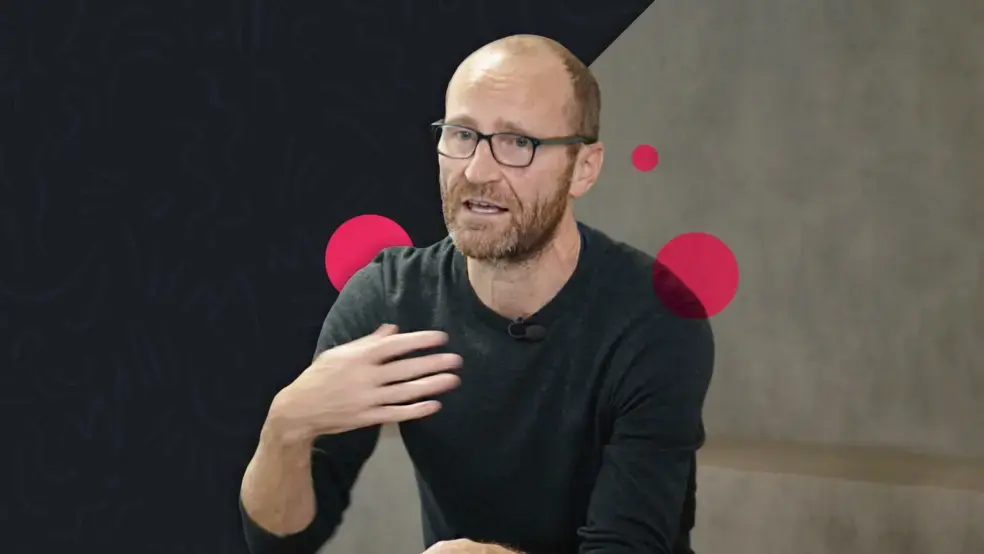What are Design Sprints and how do they work?

A Design Sprint provides a validated solution quickly, condensing months of work into a matter of days. It's a creative, time-boxed way to collaborate and fast-forward to finding the best solutions to your organisation's biggest challenges. Here's our Head of User Experience, David Ford, to explain how Design Sprints work...
What is a Design Sprint?
A design sprint is a highly collaborative, step-by-step process that takes us from challenges or problems through to a tangible outcome. That outcome is normally a prototype that we can put in front of users and get feedback on.
What's the usual 5-day process for a Design Sprint?
We start off on the Monday by exploring the challenges and deciding on a focus area that we want to solve with this Sprint. On the Tuesday, we then start to converge around a particular solution that we think is going to solve those challwnesga and we storyboard up a prototype that we want to build. The on the Wednesday, Aiimi takes away those learnings from the first two days. We get a truckload of Redbull in and cake and we lock ourselves away and we actually build a prototype in a day. On the Thursday, the 4th day, we take that prototype out and we test it with real users. We get feedback about what business value it's going to deliver. Then, on the Friday, what we do is produce a summary report that details everything we've done throughout the week, along with our recommendations for next steps. What we get is a concrete prototype, a tangible thing that we can share within the business and everybody can understand what it is we mean when we're talking about the solution.
Why is a Design Sprint so effective?
We save time and money because it's time-boxed and we're so, so focused on reaching that goal or outcome. What we also do with a Design Sprint is reduce risk. Because we've actually put this prototype in front of real users, we've got their feedback and so we're not going to go into a costly build phase without knowing, without being sure, of the business value that we're going to deliver.
What kind of challenges are suitable for Design Sprints?
The sweet spot for Design Sprints are probably the bigger, more complex problems. Things like bringing a new application to market, working on a new strategy, redesigning an underperforming service.
But we also work on much smaller problems, so things like adding a new area of functionality to an existing business tool. What we can do with that is called a Design Dash. It's a supercharged version of the Design Sprints that we would do in a day or two.
We always start off by getting a really deep understanding of the problems or objectives that the customer needs help with. What we'll do is put together a plan and come up with a proposal for taking this Sprint forward.
How many participants do you need for a Design Sprint?
With a Sprint, sometimes we've got three or four participants in a room. In other Sprints, we'll have a hundred people in the room, so we wanted the space to be able to accommodates small groups without it feeling cavernous and weird, but we also wanted the ability to accommodate much, much larger groups without it feeling crowded or cramped. When we've got those groups of a hundred people or more, what we've got are loads of breakout spaces across the Hack Zone where they can work as a subgroup on their problems and then we've got the space where we can all come together at the emd and learn what each of the teams has been working on.
Can a Design Sprint be done remotely?
Quite often, we're working with customers that have got offices throughout the UK or even the world. We've had success in the past with remote Design Sprints. The technology that we use makes everybody feel like they're in the room together, so that works really well.
Read more: How to make your remote Design Sprint a success
Who should participate in a Design Sprint?
The absolute beauty of a Design Sprint, and this is the thing that I absolutely love about the process, is getting the perspectives around the challenges and the problems from different people. So we might have CEOs working with a field engineer on a particular Sprint, for example. Quite often what we find is that it's the first time the CEO has heard about these challenges or problems from somebody in that position.
From Aiimi's perspective, we always have UX and UI skills, and then we flex the expertise that's in the room depending on the nature of the Sprint.
Can a Design Sprint deliver practical business value?
I know with a Design Sprint the philosophy is often this blue sky thinking where anything is possible. But, the reality with a lot of our customers is we know that the output of that Design Sprints has to a SharePoint site, or a Power App, or a Power BI visualisation. With Aiimi, what we're often doing on our Design Sprints is accommodating these restrictions into the process as we go through it.
We've had people say to us after a Sprint we've done more in a week that we've done in the previous two years on this project.
You might also want to check out:
How to make your Remote Design Sprint a success
What we learned from 2 virtual hacks, 3 weeks, and 150 people
Stay in the know with updates, articles, and events from Aiimi.
Discover more from Aiimi - we’ll keep you updated with our latest thought leadership, product news, and research reports, direct to your inbox.
You may unsubscribe from these communications at any time. For information about our commitment to protecting your information, please review our Privacy Policy.



